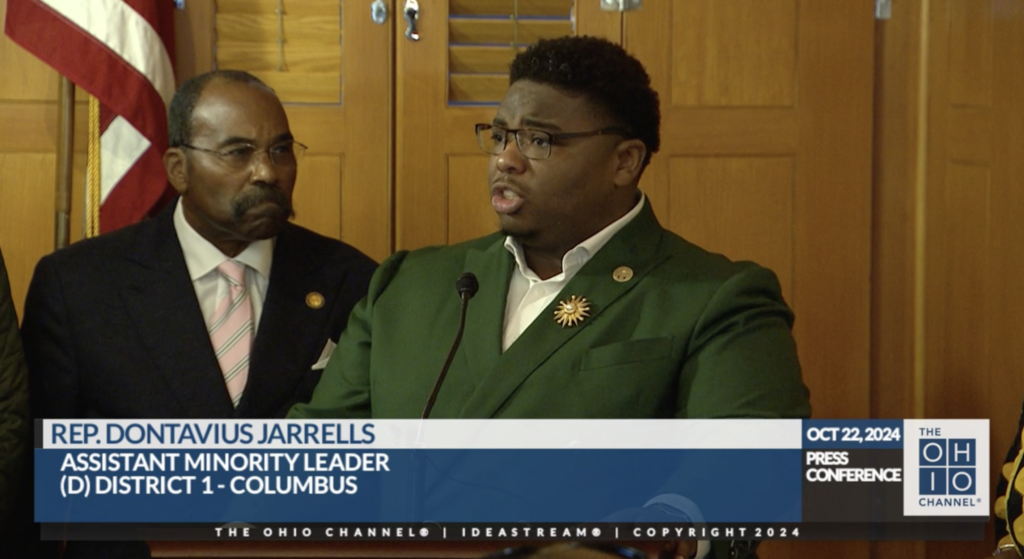State Rep. Dontavius Jarrells, D-Columbus, speaks at a press conference on Issue 1, the redistricting reform measure on the ballot in the November general election. Assistant House Minority Leader Hearcel Craig stands behind him.
(Photo: Ideastream/The Ohio Channel)
In a press conference Tuesday, members of the Ohio Legislative Black Caucus, along with a voter advocate from the Ohio Organizing Collaborative, spoke of Issue 1 redistricting reform as a way forward for communities of color and the state as a whole.
“For the first time, we have a real, enforceable path to ensure that Black voters in Ohio have the power to elect leaders who will fight for them,” said state Rep. Dontavius Jarrells, D-Columbus.
Issue 1 proposes doing away with the current Ohio Redistricting Commission made up of seven elected officials, instead creating a 15-member citizens commission.
The ORC as it stands includes the Ohio governor, auditor, and secretary of state, along with four lawmakers — one from each party in each chamber of the legislature. The 15-member citizens commission would be made up of five Republicans, five Democrats, and five independents, selected by a bipartisan panel of former judges, according to the proposal up for a vote in the November general election.
Voting yes on Issue 1 would create the Ohio Citizens Redistricting Commission. Voting no on Issue 1 would keep the current Ohio Redistricting Commission.
The Democrats organized the Tuesday press conference in response to “misinformation” about Issue 1 spread by Republicans, specifically state Sen. Michele Reynolds, R-Canal Winchester, who held her own press conference with former legislator John Barnes and other Ohioans who stand against the measure.
In her press conference, Reynolds said Issue 1 “could fragment cohesive minority voting blocks, diluting our political influence,” which Democrats said was less likely in the process proposed in Issue 1 than it is in the current system.
In the current system, certain blocks of Black voters have been “ignored,” according to OLBC members, and therefore have become apathetic to voting.
“These fair maps will possibly allow for those people to be able to vote, and vote with their conscience, and vote with the thought that my vote does count,” said OLBC vice president and state Sen. Catherine Ingram, D-Cincinnati.
Some of the Democrats scoffed at comments made by Issue 1 opponents that the measure would keep policies that would benefit Black Ohioans from going forward in the Statehouse.
“It’s funny that all of a sudden there’s an overwhelming concern for Black disenfranchisement when we are working with a supermajority who has increased voter suppression laws, made it more difficult to vote, and has also made stricter voting ID restrictions,” said state Rep. Terrence Upchurch, D-Cleveland, president of the OLBC.
Early voting has begun in Ohio, and runs until Nov. 3
YOU MAKE OUR WORK POSSIBLE.

